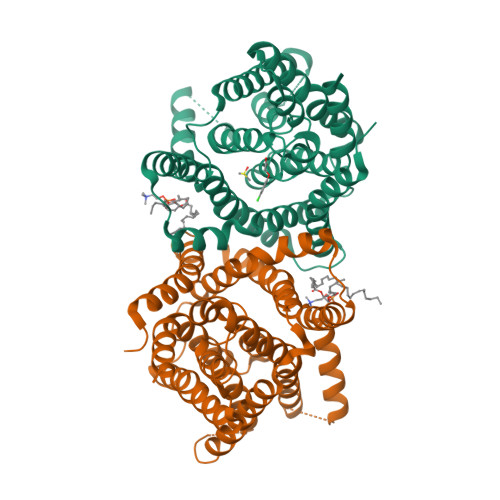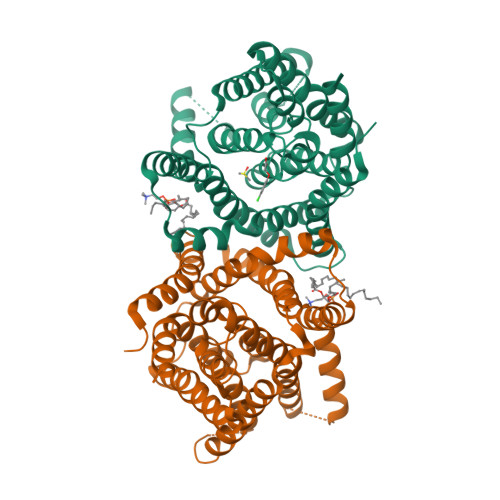Transport of herbicides by PIN-FORMED auxin transporters.
Schulz, L., Ung, K.L., Koutnik-Abele, S., Stokes, D.L., Pedersen, B.P., Hammes, U.Z.(2024) bioRxiv
- PubMed: 39257797
- DOI: https://doi.org/10.1101/2024.08.29.610046
- Primary Citation of Related Structures:
9G0W, 9G0X, 9G0Z, 9G10 - PubMed Abstract:
Auxins are a group of phytohormones that control plant growth and development 1 . Their crucial role in plant physiology has inspired development of potent synthetic auxins that can be used as herbicides 2 . Phenoxyacetic acid derivatives are a widely used group of auxin herbicides in agriculture and research. Despite their prevalence, the identity of the transporters required for distribution of these herbicides in plants is both poorly understood and the subject of controversial debate 3,4 . Here we show that PIN-FORMED auxin transporters transport a range of phenoxyacetic acid herbicides across the membrane and we characterize the molecular determinants of this process using a variety of different substrates as well as protein mutagenesis to control substrate specificity. Finally, we present Cryo-EM structures of Arabidopsis thaliana PIN8 with 2,4-dichlorophenoxyacetic acid (2,4-D) or 4-chlorophenoxyacetic acid (4-CPA) bound. These structures represent five key states from the transport cycle, allowing us to describe conformational changes associated with substrate binding and transport across the membrane. Overall, our results reveal that phenoxyacetic acid herbicides use the same export machinery as endogenous auxins and exemplify how transporter binding sites undergo transformations that dictate substrate specificity. These results enable development of novel synthetic auxins and for guiding precision breeding of herbicide resistant crop plants.
Organizational Affiliation:
Plant Systems Biology, School of Life Sciences Weihenstephan, Technical University of Munich, 85354 Freising, Germany.





















